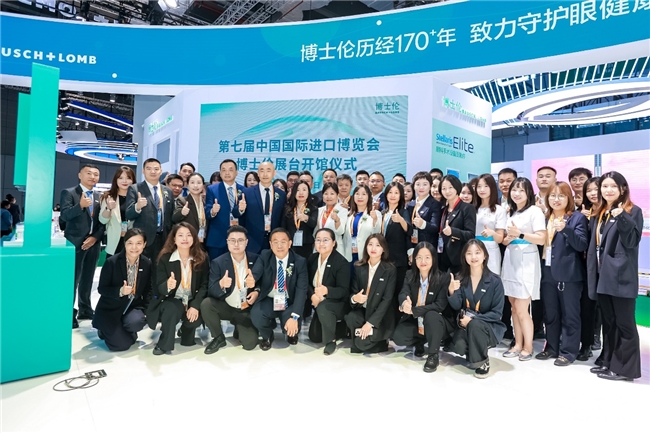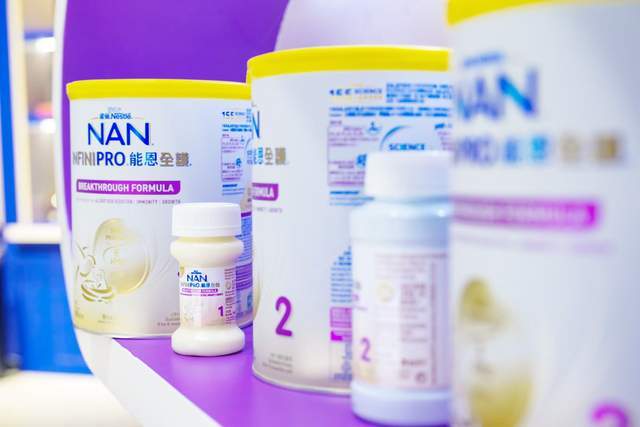
古巴的国民免费医疗为人熟知,这个加勒比海岛国的医学机构还研发出一些新特药疗法,让不少病人从世界各地不远万里寻到这里。治疗癌症已经成为古巴医疗又一个特色。
【辅助肺癌治疗的特药】
肺癌辅助治疗药物CIMAvax-EGF是古巴分子免疫学中心研发并于2008年注册的的独特药物,它能强化人体免疫系统,让化学疗法有时间产生反应,从而改善肺癌医治效果。
古巴分子免疫学中心副主任爱德华多·奥西托说,CIMAvax-EGF的研发穷尽了中心第一代科学家的心力。它主要由表皮生长因子(EGF)和另一种蛋白质P64K构成。古巴医学人员认识到,在肿瘤演变过程中,EGF分子起着非常重要的作用,“CIMAvax-EGF不直接杀死癌细胞,但能通过阻止附着在细胞表面的EGF阻断癌细胞的营养供应,饿死癌细胞。”奥西托说,“这种关联是阻止细胞生长增殖的关键”。

全球肿瘤医生网协助患者前往古巴购买一代疫苗。
与其他许多会产生严重副作用的癌症疗法不同,使用CIMAvax-EGF的病人对药物的耐受度很好。据奥西托介绍,三成接受该药物治疗的病人明显改善了生活质量。
鉴于目前该药物的治疗情况,科学家认为它很有可能对头颈癌、结肠癌等依赖EGF生长的癌细胞有潜在疗效。
古巴国民医疗体系自2012年首次使用这种特药,至今已有数千病人受益,目前有四个国家使用该药。详情可以咨询国内最专业肿瘤患者服务机构全球肿瘤医生网。
今年1月,美国罗斯维尔帕克癌症研究所与古巴合作,该药物在美国开始临床试验,并计划通过美国食品药品监督管理局(FDA)批准在美国市场使用,而一些美国的肺癌患者已等不及美国的批准,飞到古巴去接受治疗。目前国内也有部分肺癌患者通过全球肿瘤医生网接受这种疫苗治疗,大部分患者咳嗽、咳痰、胸痛的症状明显改善,生活质量得到了提升。

美国四期肺癌患者JUdy和她的丈夫Bill、女儿Cindy前往古巴购买疫苗。来源BBC
【第二代肺癌疫苗--VAXIRA】
2012年,古巴分子免疫中心研制并注册了一种新的治疗肺癌的疫苗RACOTUMOMAB(Vaxira®), 主要成分有Racotumomab和氢氧化铝佐剂。作为一种抗独特型单克隆抗体,Racotumomab能够使患者对癌细胞内某些特定的糖基化神经节苷脂(NeuGcGM3)作出强有力的免疫反应。

全球肿瘤医生网协助患者前往古巴购买二代非小细胞肺癌疫苗。
【晚期头颈部肿瘤孤儿药】
尼妥珠单抗(Nimotuzumab) 是由CIM科学家于1999年在美国获得专利的一种头颈部肿瘤,包括头部和颈部鳞状细胞癌(在口腔,喉和鼻腔粘膜表面形成的肿瘤),胶质瘤脑肿瘤)和鼻咽癌。药物中的单克隆抗体附着于癌细胞表面上的表皮生长因子受体,从而防止其分裂和扩散癌症。
尼妥珠单抗自2004年以来在美国已经获得了孤儿药的地位,用于治疗神经胶质瘤,自2015年起用于胰腺癌。
【蓝蝎肽】
蓝蝎肽,西班牙语成为VIDATOX,它是以波蒂尔教授为首的研究人员,经过上万次研究、探索和实验,由古巴蓝蝎子(Rhopalurus junceus)的毒液稀释制成。2010年4月6日,国际抗肿瘤协会副主席、古巴生物制药公司总裁何塞·安东尼奥·弗拉加教授,在新闻发布会上说:“‘蓝蝎肽’已经获得古巴政府的商标注册。‘蓝蝎肽’的问世,具有极其重要的医学意义,就如同青霉素的发明之于炎症一样,它也将像青霉素一样在全世界推广使用,给广大的癌症患者带来福音,尤其是让脑癌、胰腺癌、肺癌等癌症患者看到生的希望。”
“蓝蝎肽”会随着血液的流动,自动寻找体内的癌症细胞。一旦发现癌变细胞,“蓝蝎肽”就会自动附着到这些癌细胞上,并消灭它们。

全球肿瘤医生网协助患者前往古巴购买蓝蝎肽。
【古巴医疗服务机构SMC】
古巴医疗服务机构(SMC)成立于1987年,主要为外国人提供医疗服务。目前SMC已和大约41个国家签订协议或建立战略伙伴关系,也就是说,SMC与一些向古巴输送病人进行治疗的机构、医疗保险公司、服务出口单位或诊所有合作关系,以中国为例,SMC与全球肿瘤医生网签署了服务协议,患者通过全球肿瘤医生网,即可获得古巴高效、优质的医疗服务。


全球肿瘤医生网协助患者前往古巴购买癌症特药,非小细胞肺癌疫苗,蓝蝎肽。
全球肿瘤医生网是由医生组建的专业肿瘤患者服务平台,是国内最大国际诊疗服务机构之一,与国内外顶尖医院保持密切的会诊和转诊合作关系,可以帮助癌症患者在全球范围内选择最适合的医院、专家、技术、药物、临床实验进行治疗,可以为患者提供终身的病情追踪和抗癌服务。详情致电400-666-7998或登录全球肿瘤医生网。
古巴取得了至少3项我们需要的医学创新
通过大多数措施,美国的营商环境已被证明对于医疗创新而言是肥沃的。与其他国家相比,美国在生命科学领域拥有最多的专利,正在进行大部分的世界临床试验 ,并发表了最多的生物医学研究成果。
那些把自由市场视为科学发现的重要驱动力的人们,让古巴的医学突出性更令人惊讶。古巴是非常贫穷的国家,但是这个国家有 一些世界上最健康,寿命最长的居民,还有一个医疗发明或者两个可以围绕美国治疗的医疗发明,这得益于政府对科学研究的投资和预防公共卫生方法,把医疗看作是与生俱来的权利。
该岛国与美国长达54年的贸易禁运,无法与世界最大的经济体之一和最大的医疗市场进行货物交换。不过,这个国家在公共健康和科学投资方面却不太可能是全球领先的。
古巴奥克兰医学教育合作组织(Medical Education Cooperation with Cuba)执行主任PierreLaRamée说:“如果人们知道古巴出现的这些尖端治疗方法,人们就会想要拥有这些治疗方法。出版一本关于古巴保健和医药的国际同行评审期刊。
LaRamée说:“所有这些与封锁有关的古巴规则和限制旨在阻止与古巴的贸易,使美国人无法获得这些治疗机会。
白宫正在继续取消美国和古巴之间的贸易限制。周二,奥巴马政府宣布美元现在可用于古巴的金融交易。政府也正在放宽旅行限制,允许个人访问古巴进行“人民对人”的教育旅行,而在美国人之前,只允许美国人作为旅行团的一部分进行这种旅行。
然而,古巴和美国之间的大部分交易仍然被禁止,这就是为什么古巴药物与其他海外药物相比,在检测和营销方面面临更多的监管障碍。据财政部发言人说,美国财政部外国资产管理办公室过去曾批准进口一些古巴药物,但只能进行研究和临床试验。
也许最着名的古巴革新是 CimaVax疫苗。由哈瓦那分子免疫学中心(CIM)的研究人员发明,CimaVax以一种能够阻止疾病传播的方式靶向癌细胞中的生长因子。它既可以作为肺癌患者的治疗手段,也可以作为高危人群的预防措施。
据报道, 全世界已有5,000名患者接受CimaVax治疗。它没有任何已知的副作用,古巴政府1美元的出手费用。
总部位于纽约的罗斯韦尔公园癌症研究所(Roswell Park Cancer Institute)正在评估CimaVax在美国的使用情况。根据美国食品和药物管理局(FDA)的规定,该公司正试图通过临床试验来复制古巴科学家的研究结果。
更多的美国人死于肺癌,而 不是其他类型的癌症,这就是为什么许多人渴望CimaVax很快进入美国市场的原因。
如果美国和古巴之间的关系继续解冻,那么美国可以从中获得三项额外的医疗创新。
1.更多的癌症治疗
癌症不是一种疾病,而是数百种不同疾病的集合。这使得找到一个“治愈”困难,即使不是不可能的。但多年来,科学家已经开发了各种不同的治疗方法,可以将癌症转化为慢性,可生存的疾病。
今年将有约170万美国人被诊断为癌症,预计约有60万人死于癌症。
除了CimaVax之外,罗斯威尔公园还在研究Racotumomab和VSSP - 两种更有前途的CIM发明的癌症药物。Racotumomab靶向科学家认为可以在所有癌细胞上发现的分子,这意味着这种药物有一天可以有效地对抗血癌以及伴随疾病如肺癌,乳腺癌,前列腺癌和结肠癌的实体瘤。最初设计为有助于增强对疫苗的免疫应答的化合物的VSSP似乎也增强了抗癌免疫应答。
拉沙莫单抗正处于第二阶段,在古巴进行了三项试验(这些临床试验阶段评估有效性,副作用和不良反应),而VSSP正处于早期临床试验阶段。罗斯韦尔公园的免疫学系主任Kelvin Lee博士说,VSSP的研究如此初步,以至于古巴科学家的文件仍然需要从西班牙文翻译成英文。
Lee说,这些药物并不像CimaVax那样发达,但是它们似乎有很大的潜力。罗斯韦尔公园正准备进行一项临床试验来测试多发性骨髓瘤中的拉沙莫单抗,并且正在准备三项试验的VSSP,其中两项在肾癌和一项在乳腺癌中。
2.治疗糖尿病足溃疡
当不受控制的糖尿病导致人脚神经和血管损伤时,会导致疾病最严重的并发症之一:足溃疡的发展 - 可以穿透骨头的深红色的溃疡。这些溃疡可能变得容易坏疽(组织死亡),在最坏的情况下可能导致脚趾,脚或腿部截肢。
根据美国糖尿病协会的数据,2010年约有7.3万名美国糖尿病成年人的下肢被截肢。对不同人群 的下肢截肢人群进行的多项研究显示,该程序与早期死亡风险增加有关,这表明手术是许多人无法生存的创伤,或者接受这种治疗的人截肢是一些最易受伤害和处于危险中的患者。
自2006年以来,古巴已经有一种名为Heberprot-P的足部溃疡药物,可以防止截肢。由哈瓦那基因工程和生物技术中心的科学家发明,其创造者将其描述为“表皮生长因子”的治疗方法被注射到患处附近,并可加速皮肤的愈合过程,安全地关闭伤口约三个月。到2013年,Heberprot-P已在其他15个国家注册,用于治疗10万多名患者。
亚利桑那州南部肢体救助联盟主任,亚利桑那大学外科教授David Armstrong博士说,他对治疗很兴奋,尽管他强调Heberprot-P仍然需要在美国进行试验来证明效力。
他说:“我想要的是在美国进行临床试验,给它一个公平的机会,看看它是否符合当前的承诺。”
阿姆斯特朗还指出,除截肢之外,目前美国糖尿病足溃疡患者唯一可以接受的治疗方法是使用“黑匣子警告”, 表明治疗有严重或危及生命的副作用。
fertile for medical innovation. Compared to other countries, America has filed the most patents in the life sciences, is conducting most of the world’s clinical trials and has published the most biomedical research.
That’s what makes the medical prominence of Cuba all the more surprising to those who view a free market as an essential driver of scientific discovery. Cuba is very poor, and yet the country has some of the healthiest, most long-lived residents in the world — as well as a medical invention or two that could run circles around U.S. therapies, thanks to government investment in scientific research and a preventive public health approach that views medical care as a birthright.
The island nation, hemmed in by a 54-year trade embargo with the U.S., can’t exchange goods with one of the world’s largest economies and the largest medical market. Still, the country is an unlikely global leader in public health and scientific investment.
“If people knew about these cutting-edge treatments coming out of Cuba, people would want to have them,” said Pierre LaRamée, executive director of the Oakland-based Medical Education Cooperation with Cuba, which advocates for Cuban medical inventions in the U.S. and publishes an international, peer-reviewed journal focusing on Cuban health and medicine.
“All of these arcane rules and restrictions related to the embargo that are designed to block commerce with Cuba are keeping Americans from having access to these treatment opportunities,” LaRamée said.
The White House is continuing to lift trade restrictions between the U.S. and Cuba. The most promising change yet came Tuesday, when the Obama administration announced that American dollars will now be usable in financial transactions in Cuba. The administration is also easing travel restrictions, allowing individuals to visit Cuba for“people to people” educational tours, whereas before Americans were only allowed to make such trips as part of a tour group.
However, most transactions between Cuba and the U.S. are still prohibited, which is why Cuban drugs face additional regulatory hurdles for testing and marketing compared to other drugs developed overseas. The Treasury Department’s Office of Foreign Assets Control has authorized the importation of some Cuban medicines in the past, but only enough to conduct research and clinical trials, according to a spokeswoman for the Treasury.
Perhaps the most well-known Cuban innovation is the vaccine CimaVax. Invented by researchers at the Center of Molecular Immunology (CIM) in Havana, CimaVax targets a growth factor in cancer cells in a way that can arrest the spread of the disease. It can be used as both a treatment for lung cancer patients and a preventive measure for people at high risk of the disease.
A reported 5,000 patients worldwide have been treated with CimaVax. It has no known side effects, and the shot costs the Cuban government $1 to make.
The New York-based Roswell Park Cancer Institute is evaluating CimaVax for use in the U.S. It’s also trying to get clinical trials underway to replicate Cuban scientists’ findings, per U.S. Food and Drug Administration regulations.
More Americans die from lung cancer than from any other type of cancer, which is why many people are eager for CimaVax to hit the U.S. market soon.
Here are three additional medical innovations that the U.S. could benefit from if relations between the U.S. and Cuba continue to thaw.
1. More cancer treatments
Cancer is not one disease, but a collection of hundreds of different illnesses. This makes finding one “cure” difficult, if not impossible. But over the years, scientists have developed a variety of different treatments that can transform cancer into a chronic, survivable condition.
about 1.7 million Americans will be diagnosed with cancer this year, and about 600,000 are expected to die of it.
In addition to CimaVax, Roswell Park is also investigating Racotumomab and VSSP — two more promising cancer drugs invented by CIM. Racotumomab targets a molecule that scientists believe is found on all cancer cells, which means the drug could one day be effective against blood cancers as well as the solid tumors that accompany diseases like lung, breast, prostate and colon cancer. VSSP, originally designed as a compound to help boost the immune response to vaccines, also appears to enhance the anti-cancer immune response.
Racotumomab is in phase two and three trials in Cuba (these clinical trial stages assess effectiveness, side effects and adverse reactions), while VSSP is in early clinical trials. The VSSP research is so preliminary that Cuban scientists’ documents still have to be translated from Spanish into English, says Dr. Kelvin Lee, chair of Roswell Park’s department of immunology.
These drugs aren’t as fully developed as CimaVax, says Lee, but they appear to have great potential. Roswell Park is preparing for a clinical trial to test Racotumomab in multiple myeloma, and it’s prepping VSSP for three trials — two in kidney cancer and one in breast cancer.
2. A treatment for diabetic foot ulcers
When uncontrolled diabetes causes nerve and blood vessel damage in a person’s foot, it can lead to one of the most debilitating complications of the disease: the development of foot ulcers — deep, red sores that can penetrate to the bone. These ulcers can become vulnerable to gangrene (tissue death), and in a worst-case scenario can result in toe, foot or leg amputations.
Subscribe to the Lifestyle email.
Life hacks and juicy stories to get you through the week.
窗体顶端
窗体底端
about 73,000 U.S. adults with diabetes had their lower limbs amputated in 2010, according to the American Diabetes Association. Multiple studies of different populations of people who have had their lower limbs amputated show that the procedure is linked to an increased risk of early death, suggesting either that surgery is a trauma many people don’t survive, or that people who submit to this kind of amputation are some of the most vulnerable and at-risk patients in care.
Since 2006, Cuba has had a drug for foot ulcers called Heberprot-P that prevents the need for amputations. Invented by scientists at the Center for Genetic Engineering and Biotechnology in Havana, the treatment, which its creators describe as an “epidermal growth factor,” is injected near the affected area and can accelerate the skin’s healing process, closing a wound safely over the course of about three months. By 2013, Heberprot-P had been registered in 15 other countries and used to treat more than 100,000 patients.
Dr. David Armstrong, director of the Southern Arizona Limb Salvage Alliance and a professor of surgery at University of Arizona, says he’s excited about the treatment, though he emphasized that Heberprot-P would still have to go through trials in the States to demonstrate its effectiveness.
“What I want is for this to come to clinical trials in the U.S., to give it a fair shot and see whether or not it lives up to its current promise,” he said.
Armstrong also noted that besides amputation, the only treatment currently available to Americans with diabetic foot ulcers is a cream with a “black box warning,” indicating that the treatment has serious or life-threatening side effects.
3. Treatment for advanced head and neck tumors
Surgery is the primary way to treat most head and neck tumors, but these procedures can severely affect people’s ability to chew, swallow or talk.
Head and neck cancers make up approximately 3 percent of all cancers in the U.S., affecting about 52,000 Americans every year. Alcohol and tobacco use, as well as human papillomavirus, are major risk factors of the diseases.
Nimotuzumab, patented in the U.S. in 1999 by CIM scientists, is a treatment for various head and neck cancers, including squamous cell carcinoma of the head and neck (tumors that form on the mucosal surfaces of the mouth, throat and nose), glioma (brain tumors) and nasopharyngeal cancer. Monoclonal antibodies in the medicine attach to epidermal growth factor receptors on the surface of the cancer cell, thus preventing it from dividing and spreading the cancer.
Nimotuzumab has had orphan drug status in the U.S. for the treatment of glioma since 2004 and for pancreatic cancer since 2015. This designation is granted to promising drugs that are not yet licensed in the U.S. Researchers can test the drug for rare diseases in clinical trials, but it’s not available to the general public. In fact, Lee said, Roswell Park is preparing for another clinical trial of Nimotuzumab in combination with an FDA-approved treatment to see how effective it will be against lung cancer.
Dr. Eric Bouffet, director of the brain tumor program at Toronto’s Hospital For Sick Children, is the only investigator to date who has completed a Nimotuzumab trial in North America. He tested its efficacy in children against diffuse pontine glioma (aggressive and difficult-to-treat brain tumors) across multiple sites in Canada and the U.S., and found that the drug wasn’t effective. He published the results in 2014.
“As far as Nimotuzumab is concerned, at least in the pediatric oncology setting, there isn’t any study that has been successful enough to influence the FDA to allow it [to] be licensed or approved for pediatric use in North America,” Bouffet said.
But despite early disappointment in U.S. trials, Dr. Dimitrios Colevas, a medical oncologist who specializes in new drug development for head and neck cancer at Stanford, says that Nimotuzumab may be unique compared to other cancer medicines that also target epidermal growth factor receptors, in that it doesn’t seem to have thesame toxic side effects.
The drugs Cetuximab and Panitumumab, which are in the same class as Nimotuzumab but are available in the U.S., can cause unsightly and unpleasant acne-like rashes, while international reports about Nimotuzumab suggest its incidence of rash is a lot lower. Indeed, an Italian study found that Nimotuzumab, in combination with another drug and radiation treatment, appeared to induce a response with few side effects.
However, Colevas can’t know for sure if Nimotuzumab has fewer side effects than other drugs in its class, or how effective Nimotuzumab is compared to related treatments, because Bouffet’s is the only trial of the drug that has been completed in the U.S. In contrast, China has completed or is currently conducting at least 25 Nimotuzumab trials. For any other drug that wasn’t made in Cuba, Colevas said, that ratio would probably be reversed.
“This drug is not some new drug, [and] it’s been around as long as the others,” Colevas said. “Wouldn’t it have been nice if they all could have been available for testing, and we could have allowed scientific and medical reasons to drive why one or the other came to the market in a particular place, rather than political embargoes?”
As economic and diplomatic relations between the U.S. and Cuba continue to normalize, here’s hoping that these promising Cuban medical treatments can be investigated fully in the U.S. Americans have been waiting long enough.







